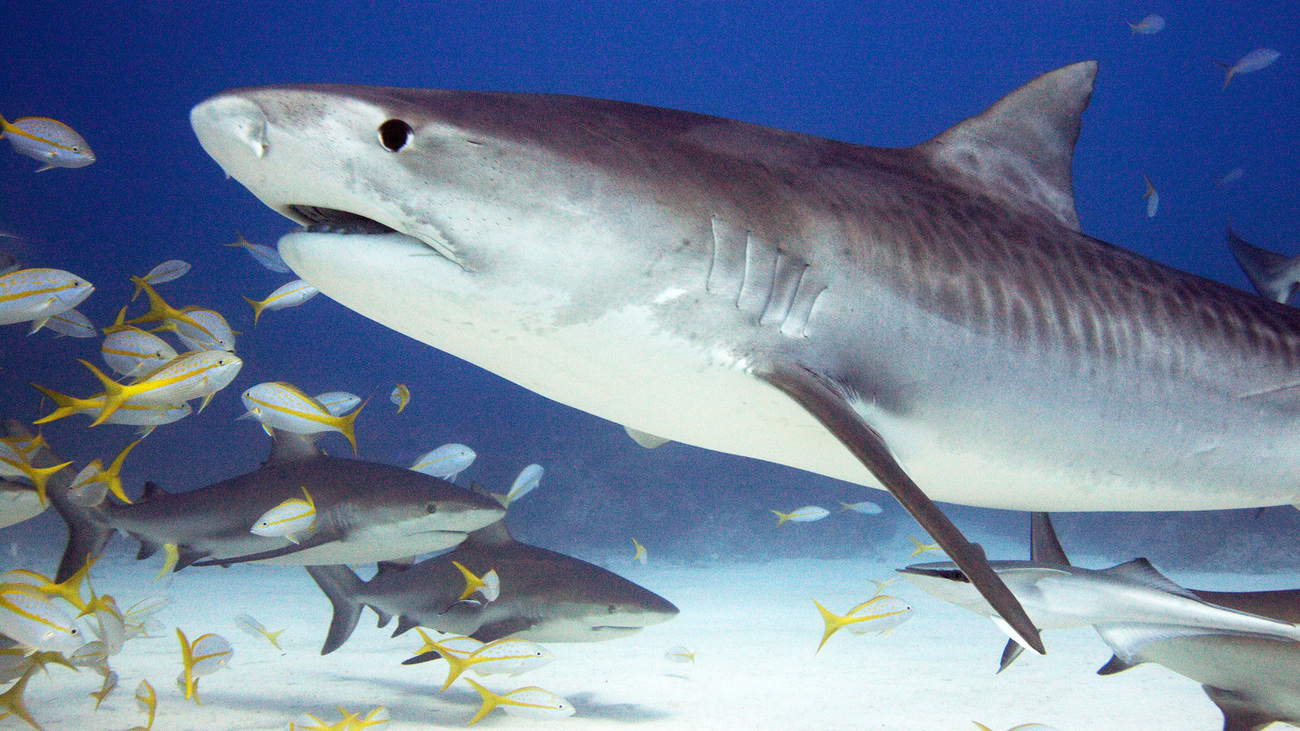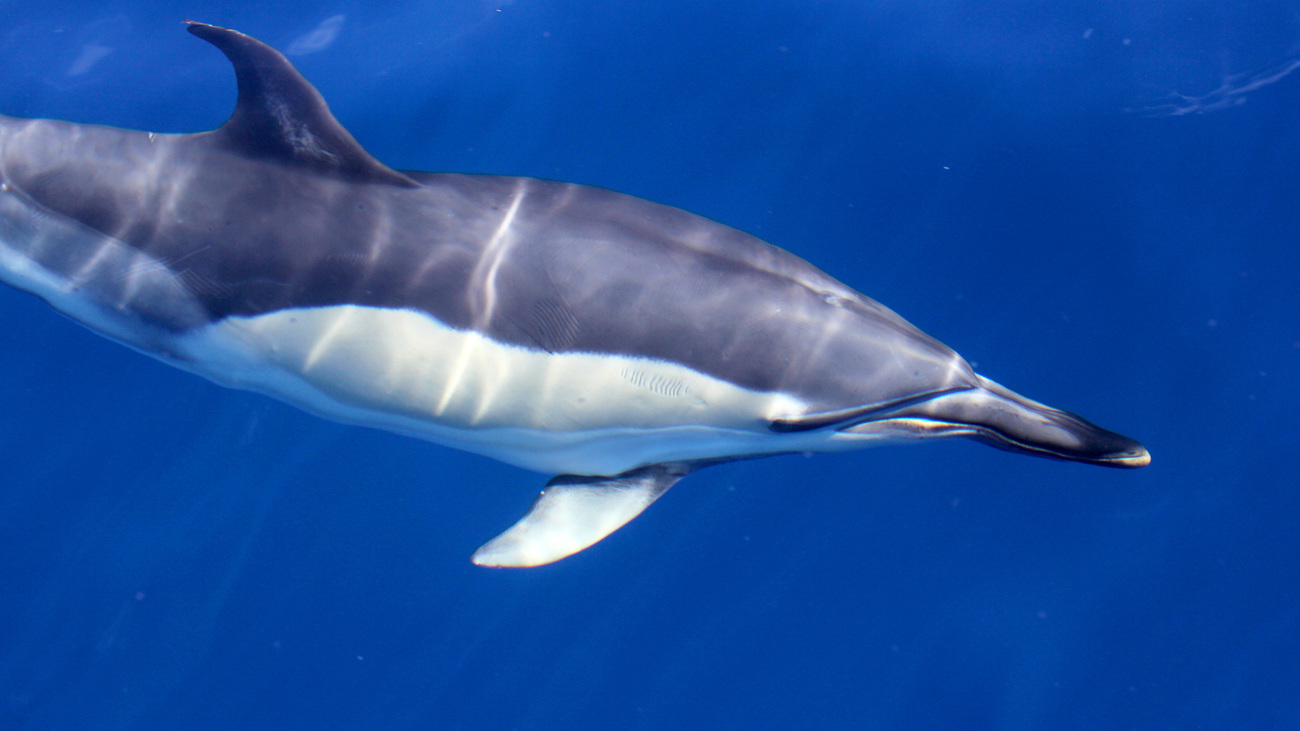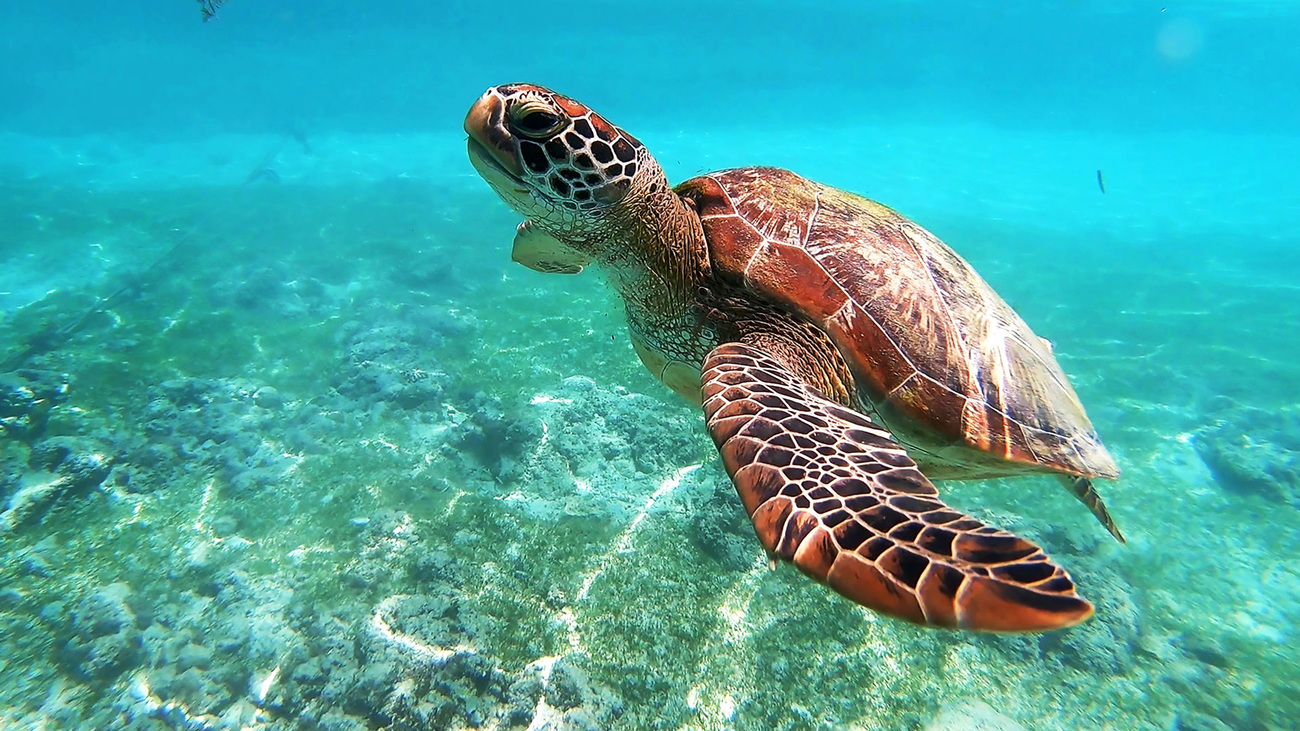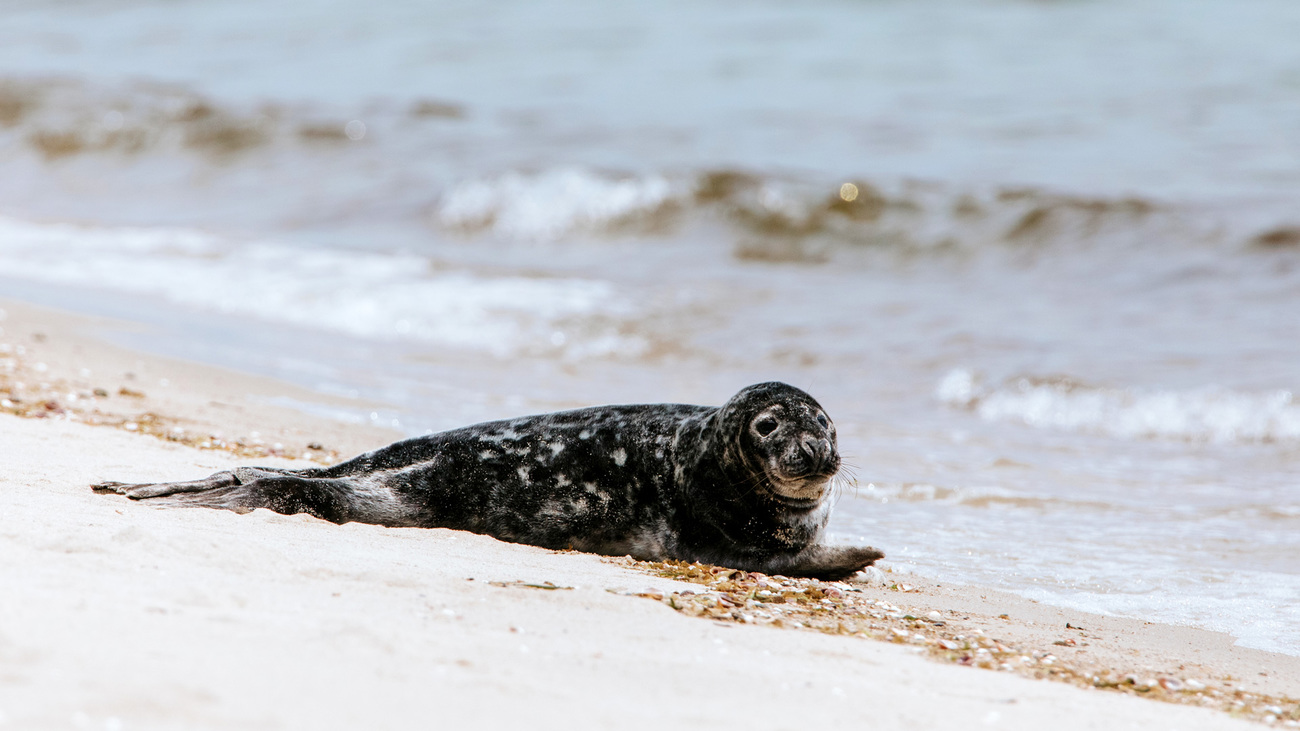Every year, millions of marine animals fall victim to bycatch, the unintended capture of non-target fish and ocean life in commercial fishing gear. The practice of capturing and discarding marine animals in this way not only threatens the survival of these species but also disrupts the delicate balance of marine ecosystems.

In this article, we take a closer look at bycatch and its causes, as well as the significant impact that bycatch has on marine life and the environment. Additionally, we also explore proposed solutions to this ongoing problem and highlight some of IFAW’s initiatives aimed at preventing bycatch.
IFAW is a global organisation with programmes dedicated to marine conservation and marine mammal rescue. One of our top priorities is protecting marine life like whales, dolphins, and sea turtles from threats like bycatch.
What is bycatch?
Bycatch is a term often used in marine conservation that refers to the marine life unintentionally captured by or entangled in commercial fishing equipment, including gill nets, shrimp trawls, and longline gear. They are not the intended target but are accidentally caught by these indiscriminate fishing practices.
Bycatch affects a range of aquatic wildlife, including seals, dolphins, whales, sharks, sea turtles, seabirds, and vulnerable fish populations.
How does bycatch harm marine life?
Animals caught in bycatch are often severely injured and can die as a direct result of their wounds.
When marine animals are dragged to the surface by commercial fishing gear, the rapid change in water pressure can cause their internal organs to rupture. If they are taken out of the water, they can die on the boat deck from lack of oxygen. Conversely, if they’re trapped underwater in fishing nets for too long, they risk dying from exhaustion or starvation. As they fight to free themselves, the equipment can damage and pierce through their skin, causing injuries and even mutilations.
Fishermen often throw bycatch back into the sea, but the stress and exhaustion these animals experience following this traumatic experience can have a devastating impact on their chances of survival in the face of predators and disease. It’s also highly likely that they will die from any severe injuries.

What animals are impacted by bycatch?
A range of marine animals, from whales and sharks to juvenile fish and seabirds, fall victim to bycatch every year. Some of the species and groups most impacted by bycatch include cetaceans, sea turtles, coral, albatrosses, and sharks.
Cetaceans
A group of marine mammals, cetaceans include dolphins, porpoises, and whales. These animals regularly become entangled in fishing nets. A 2020 study estimated that four million cetaceans—most of them dolphins—have been caught as bycatch in recent decades in the Indian Ocean alone, causing dolphin numbers to drop by as much as 80% as a direct result of commercial fishing.
It’s a similar story in the Bay of Biscay in France, a known hotspot for dolphin bycatch. More than 1,200 stranded dolphins were found dead in the region between January and March 2019. What’s even more horrifying is that this figure is only the tip of the iceberg. Only around 10-20% of bycaught dolphins become stranded while the remaining 80-90% drown and sink to the bottom of the sea. This means that the actual mortality rate for dolphins in the Bay of Biscay for the winter 2019 period is likely more than 10,000. With the support of the Dutch Postcode Lottery, IFAW is working on solving this issue.
Entanglement in fishing gear is one of the biggest threats to the critically endangered North Atlantic right whale, and may well become the reason for their eventual extinction. For these whales, entanglements typically lead to a slow and painful death caused by either starvation, infected lacerations, increased susceptibility to disease, extreme stress, or drowning. The stress and physical pain of entanglement can also impact their inclination and ability to mate. With only about 350 individuals remaining, even a single reproductive female whale falling victim to bycatch has a significant impact on the potential success of the following calving season and the ongoing survival of the species.
Bycatch has also had a severe impact on vaquitas, a critically endangered species of porpoise. Illegal fishing has caused the current vaquita population to drop to a mere 18 adult individuals, with fears that the entire species could be wiped out if this practice continues.
Sea turtles
Bycatch is one of the most serious threats to sea turtle populations. These marine reptiles love to forage at the bottom of the sea for food, meaning that they often get trapped in the large nets that are dragged across the ocean floor by fishermen ‘bottom trawling’ for shrimp and prawns.
Populations of loggerhead and leatherback turtles, already listed as vulnerable by the IUCN, are further threatened by longline fishing practices. These turtles either drown when the longline hooks get caught on their mouths, flippers, or necks, or when they swallow the hooks, which can often prove fatal.

Coral
Coral reefs are also vulnerable to bycatch from bottom trawling. The practice of dragging enormous nets across the ocean floor can break, dislodge, or crush coral structures, and discarded nets often become tangled around coral, posing a threat to any marine animals that try to approach it. All this turns these critical and thriving hubs of biodiversity into barren, grey landscapes incapable of supporting marine life.
Albatrosses
As seabirds swoop down or dive underwater for food, they are often caught on the J-hooks used in longline fishing methods or ensnared by nets, only to drown beneath the surface. This threat causes more than 320,000 seabirds to drown each year, including an estimated 100,000 albatrosses, one of the most endangered families of seabirds.
Sharks
When it comes to bycatch, sharks are among the most vulnerable marine animals. Since they often follow the same routes as fishing vessels, sharks are especially susceptible to being trapped in gill nets or caught in long lines. Researchers estimate that around 100 million sharks are killed as a result of fishing practices every year. Combined with their slow reproductive rates, this threat makes it even difficult for shark populations to recover.
How does bycatch impact the ocean?
Bycatch is one of the five biggest threats to life in the ocean. Bycatch significantly disrupts ocean biodiversity and ecosystems by removing key species that play essential roles in maintaining ecological balance.
The removal of non-target fish and marine wildlife alters predator-prey dynamics, potentially leading to the overpopulation of some species and the decline of others. For instance, the depletion of apex predators such as sharks due to bycatch can result in the overabundance of their prey, which in turn can over consume their food sources, causing a domino effect that disrupts the entire food web and causes species like algae to overpopulate the environment.
Furthermore, bycatch can lead to the decline of species that are crucial for habitat maintenance. Many marine species contribute to the structure and function of their environments; for example, certain fish and invertebrates are involved in nutrient cycling, sediment stabilisation, and coral reef health.
When these species are removed from the ecosystem, these functions can be impaired, leading to habitat degradation. This degradation can reduce the resilience of marine ecosystems to other stressors such as climate change and pollution, thereby amplifying the negative impacts on ocean biodiversity and ecosystem stability.

How can we prevent bycatch?
Preventing bycatch requires implementing alternative fishing gear and practices, stricter regulatory measures, and ecosystem-based management strategies. Some examples of alternative fishing gear include turtle excluder devices (TEDs), which allow sea turtles to escape shrimp trawls, and circle hooks instead of J-hooks in longline fisheries, which reduce the capture of non-target species such as seabirds and sharks.
One of IFAW’s proposals to reduce dolphin bycatch in the Bay of Biscay is the use of alternative gear such as hand lines instead of gill nets. Another alternative type of fishing gear IFAW supports is on-demand lobster and crab gear, which eliminate the fixed vertical buoy ropes that so often entangle whales.
Night setting—putting lines down at night—is one of three bycatch mitigation methods designed to protect albatrosses, which only feed during the day. However, independent bycatch monitoring should also be used to ensure compliance, especially since satellite footage gathered in a 2019 study showed that only 15% of industrial fishing vessels used night setting.
IFAW recognises that we are much more likely to see a reduction in bycatch if these alternative practices are enforced within regulatory and management measures, such as establishing bycatch limits, creating marine protected areas (MPAs), and implementing seasonal closures in key habitats.
With effective monitoring, compliance, and collaboration with the fishing industry, it is possible to significantly mitigate the impacts of bycatch on marine biodiversity and ecosystems.
Related content
Our work can’t get done without you. Please give what you can to help animals thrive.